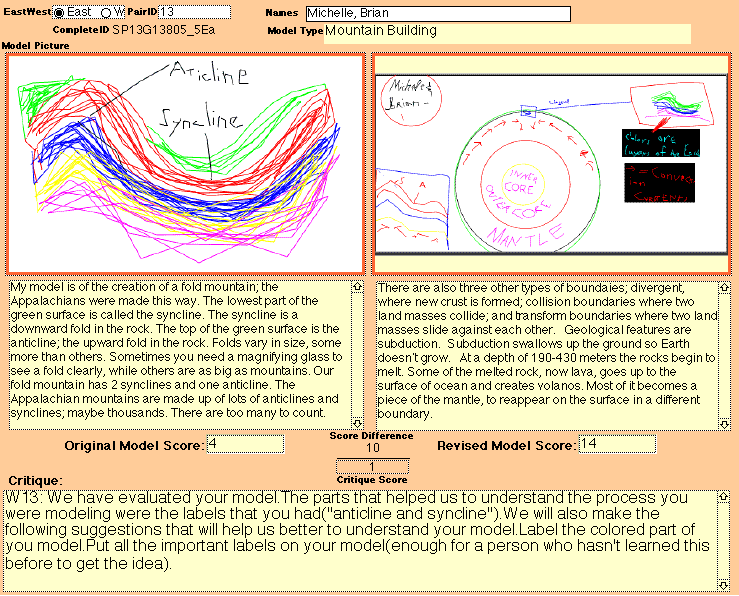Research Results | Volcano 1 | Volcano 2 | Mountain 1 | Mountain 2 | Pre-Post Responses
Mountain Model 1
Examples of Models, Explanations, Learning Partners' Critiques and Revisions for Mountain Building
In the following examples, the model on the left is the students' original model and explanation. On the bottom under "Critique" is their opposite coast learning partners' critique of the model. On the right are students' revised models and revised explanations.

In this original model above (left), the students had focussed on the crustal layer of the earth and had not included what happens inside the earth when mountains are formed; that is, there is no structural information or causal information about the inside of the earth. Again, this is a "local" model of plate tectonic phenomena (Gobert, 2000) because it does not include any processes or mechanisms inside the earth. In the critique which was done by their West coast partners, the learning partners requested that they label their model. The revised model includes labels (as suggested); it is also a much more detailed model, suggesting that the students learned a great deal from the content in the "What's on your plate?" curriculum. Their new model includes the crustal layer as a "cut away" from the cross section view; it also includes convection as a causal mechanism in mountain building (in the original model there were no causal mechanisms included). The inclusion of convection as a causal mechanism, the relationship of the convection to the crustal movement and the location of the convection in the correct layers of the earth (the mantle), in their revised model represents a significant advance from their earlier model (Gobert, 2000).

